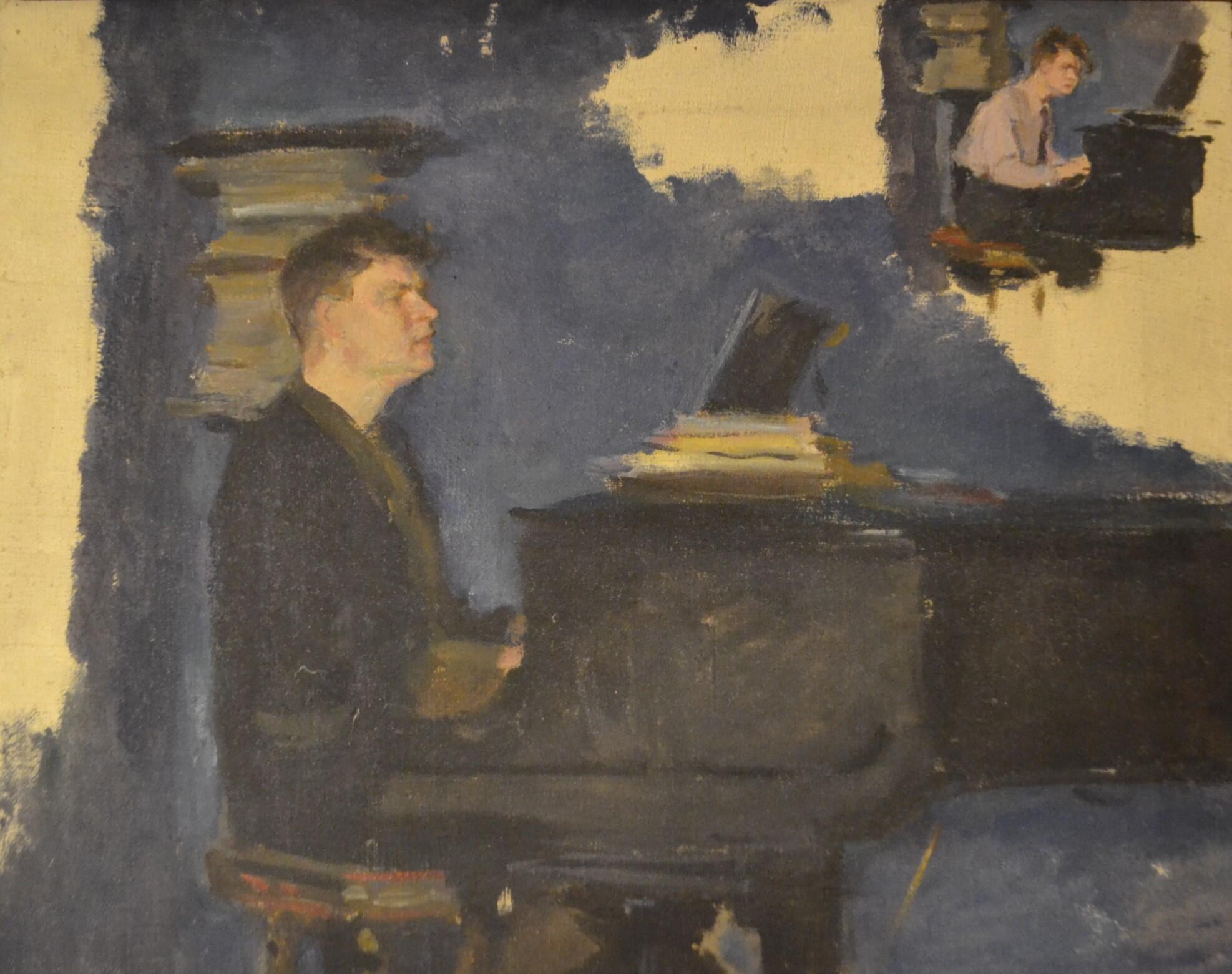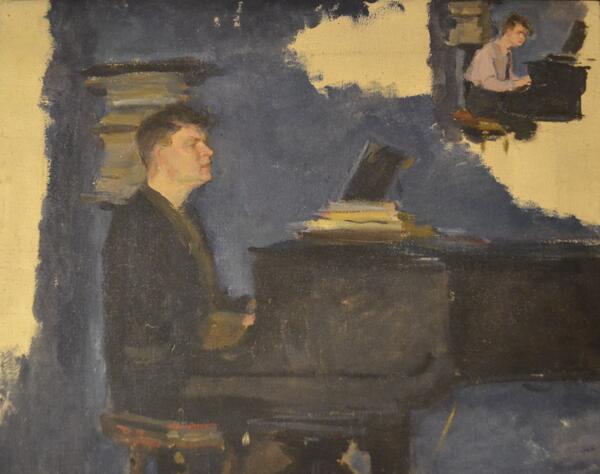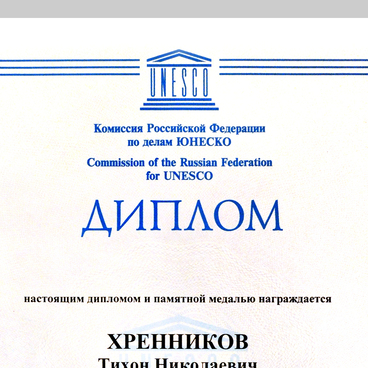The artist Nikolay Zelensky painted the picture ‘T. Khrennikov at the Piano’ in 1940. The work is preparatory sketches for a portrait, which the painter did not manage to finish.
Zelensky created two sketches for future work. In both versions, he portrayed Khrennikov at his work — the composer is sitting at the piano. Only clothes and body position differ: for the first sketch, the painter chose dark clothes and a pensive pose — the composer froze and put his hands on the keys. On the second study, he is in a light shirt — he bent over the instrument and plays a melody that just came to his mind.
The artist was interested in the person, rather than the environment around him, so the author placed the composer on a neutral background: a dark blue wall, a barely noticeable stove, a black piano and a brown chair. Due to the composition, the figure of Khrennikov is the central element of the picture.
Zelensky captured the musician at the very beginning of his career. In the 1930s, Khrennikov became famous in the musical and theatrical environment, among his acquaintances were people of art, including artists. The portrait painter Nikolay Zelensky was among the composer’s friends.
Khrennikov’s career began in 1936, when he was invited to work at the Moscow Theater for Children under the direction of director Natalya Sats. In the same year, the composer’s first public concert took place. In 1939 Khrennikov wrote an opera about the civil war “In a Storm” at the suggestion of the theatrical director Vladimir Nemirovich-Danchenko. The premiere took place in Moscow at the Stanislavsky Theater.
Work on the painting proceeded slowly as the composer did not have time to pose. He was busy in theaters and worked for the musical film “Pig and Shepherd”, which was filmed by director Ivan Pyriev at the “Mosfilm” studio. Zelensky did not have time to finish the portrait: the war began, Khrennikov and his family left for evacuation to the city of Yekaterinburg and rarely came to Moscow, and soon the artist died.
Khrennikov regretted the early departure of the talented artist and kept the sketches as a memory to a friend. In 2000, he donated the work to the collection of the house-museum.
Zelensky created two sketches for future work. In both versions, he portrayed Khrennikov at his work — the composer is sitting at the piano. Only clothes and body position differ: for the first sketch, the painter chose dark clothes and a pensive pose — the composer froze and put his hands on the keys. On the second study, he is in a light shirt — he bent over the instrument and plays a melody that just came to his mind.
The artist was interested in the person, rather than the environment around him, so the author placed the composer on a neutral background: a dark blue wall, a barely noticeable stove, a black piano and a brown chair. Due to the composition, the figure of Khrennikov is the central element of the picture.
Zelensky captured the musician at the very beginning of his career. In the 1930s, Khrennikov became famous in the musical and theatrical environment, among his acquaintances were people of art, including artists. The portrait painter Nikolay Zelensky was among the composer’s friends.
Khrennikov’s career began in 1936, when he was invited to work at the Moscow Theater for Children under the direction of director Natalya Sats. In the same year, the composer’s first public concert took place. In 1939 Khrennikov wrote an opera about the civil war “In a Storm” at the suggestion of the theatrical director Vladimir Nemirovich-Danchenko. The premiere took place in Moscow at the Stanislavsky Theater.
Work on the painting proceeded slowly as the composer did not have time to pose. He was busy in theaters and worked for the musical film “Pig and Shepherd”, which was filmed by director Ivan Pyriev at the “Mosfilm” studio. Zelensky did not have time to finish the portrait: the war began, Khrennikov and his family left for evacuation to the city of Yekaterinburg and rarely came to Moscow, and soon the artist died.
Khrennikov regretted the early departure of the talented artist and kept the sketches as a memory to a friend. In 2000, he donated the work to the collection of the house-museum.



